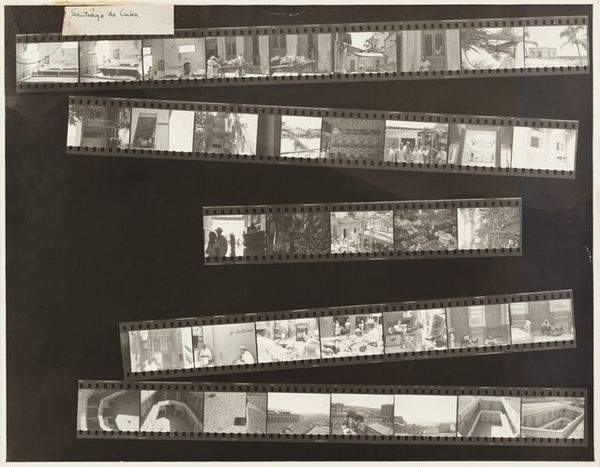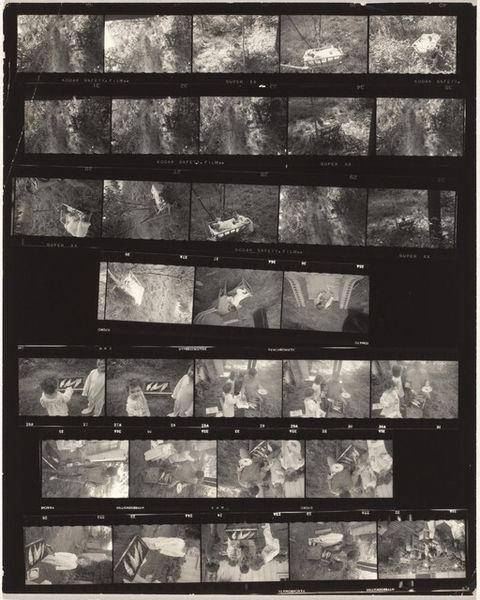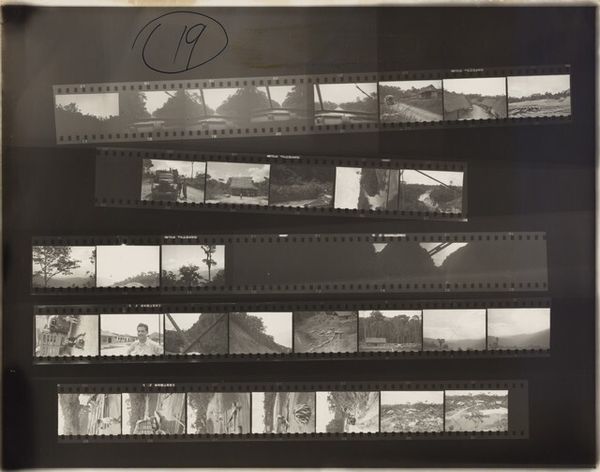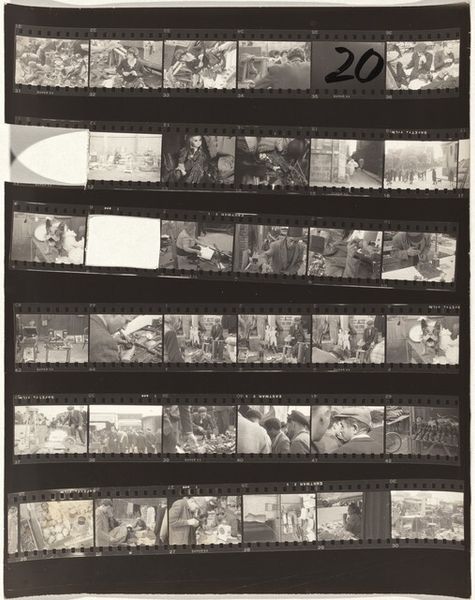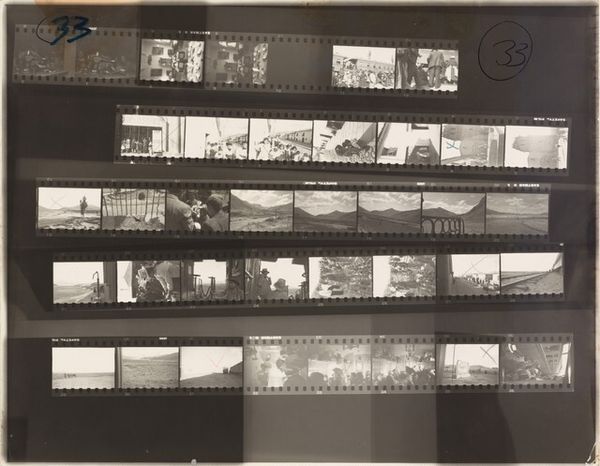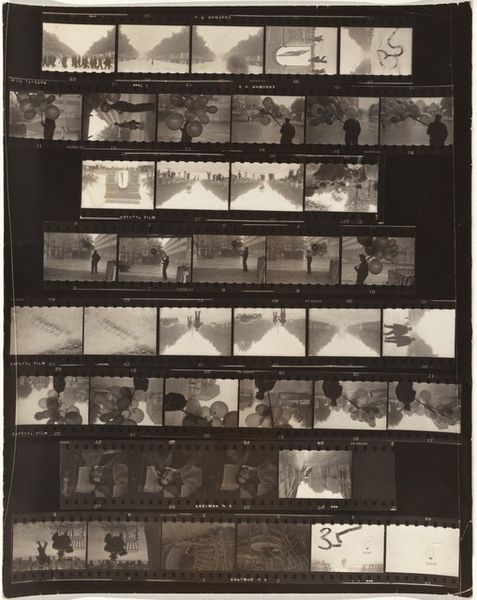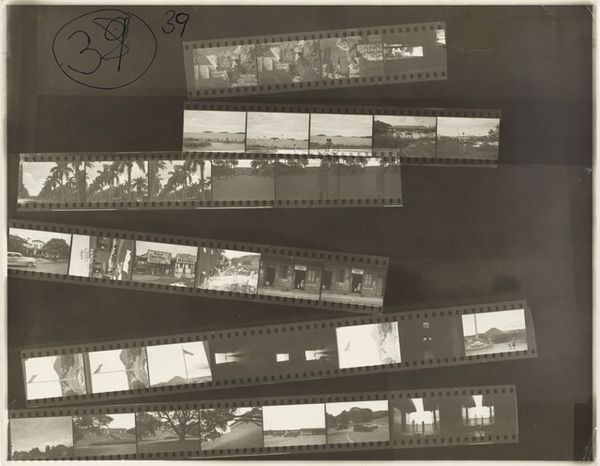
photography
#
film photography
#
street-photography
#
photography
#
realism
Dimensions: sheet: 27.8 x 35.4 cm (10 15/16 x 13 15/16 in.)
Copyright: National Gallery of Art: CC0 1.0
Curator: Robert Frank’s series of contact sheets, such as “Peru 16” from 1948, offers such insight into the creation and crafting of images, documenting his shooting process. Editor: It feels like fragments of a forgotten memory; all in muted gray tones. The collective scenes carry a weight of history, of untold stories in that urban South American setting. Curator: Exactly, each frame capturing an instantaneous moment on the streets of Peru. Notice how the film strip, the literal material record, becomes both the medium and subject of the art. The raw, unedited quality gives immediacy. What do you make of the recurrence of similar scenes, almost repeated from one strip to another? Editor: Well, repeated architectural features become like refrains in a song – a visual anchor. And when similar street scenes appear, I get a strong sense of procession, or collective demonstration – perhaps civic pride or perhaps unrest. You can observe the details in people’s postures in the frames. What catches your attention regarding his processing choices here? Curator: Look closely – the rough edges of the strips themselves, the notation of "16" in pen; we get this fascinating blend of planned photography with incidental gesture and marking. This exposes so much about Frank's technical procedures, allowing access to a more raw engagement of the processes which have been deliberately obscured in more conventional darkroom prints. The images are both document and artistic object, isn't it interesting? Editor: Absolutely, the interplay adds such complexity. I notice especially in one frame what seems to be fire fighters. In many cultures, firemen symbolize not only immediate safety but also longer-term resilience, restoration, a hope that something will arise from ruin. Frank is, in many ways, showing us that hope in miniature, that sense of cultural possibility being documented frame by frame. Curator: Frank, especially in works like this, allows us this unique lens into his production, making visible what we usually do not get to consider within photographic print. We must be careful though not to see just the process alone as he still crafts carefully made images using a tool and film that had become ubiquitous in modern cultures. Editor: The raw materials meet iconic themes – life, resilience and recovery amid chaos; this series is as pertinent today as it was in 1948. Curator: True, Frank’s contact sheets remind us that what lies "behind" a photograph shapes how the image is finally made and received. Editor: Indeed. In stripping back to these raw materials he adds weight to this important visual record.
Comments
No comments
Be the first to comment and join the conversation on the ultimate creative platform.
